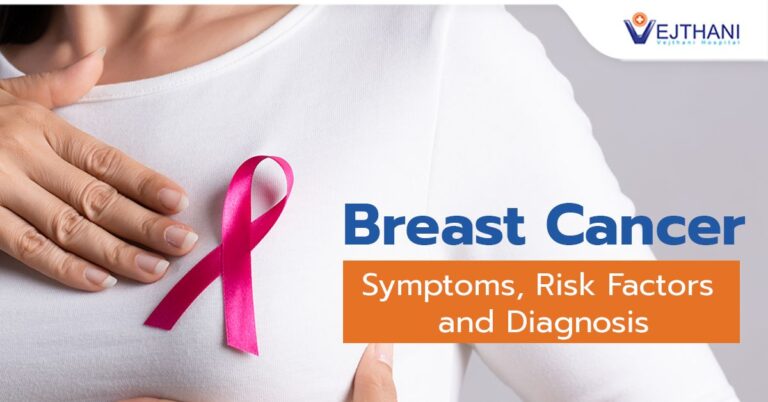

Breast cancer is the most common cancer in Thai women and the leading cause of cancer death in women. It is most common in women aged 40-49, at about 41%, and in women under 39, at 18.6%. Hence, it is essential to monitor by yourself breast self- examination.
Step 1: Examine
- Look at your breasts in the mirror, and compare the two sides for shape, skin color, or size abnormalities.
- Raise both arms to observe the pulling of the breast and dimples.
Step 2: Palpation
- Start from the collarbone and use your fingers to feel each breast, alternating sides. For example, use your right hand to feel your left breast using your index, middle, and ring fingers. Start by applying gentle pressure, followed by medium, and then increase to firm pressure. Search for any irregularities, lumps, hick spots, or other changes. Do a circular motion to ensure you cover all the areas. Press the nearest tissues around your underarms. Be sure to check under your areola (the area around your nipple), then squeeze your nipple to see if there is discharge. Feel the breast in all directions. Perform the examination in both standing and lying positions.
Remember that your breast tissue includes your underarms, collarbone, and the upper part of your abdomen. It’s not limited to the area between your breasts and nipples.
- Vertically: Palpate from under the breast to the collarbone.
- In a spiral motion: Palpate clockwise and counterclockwise.
If you notice any unusual changes, lumps deviating from your normal baseline, or unexpected symptoms like nipple discharge or persistent breast pain (unrelated to your menstrual cycle), it’s time you see a doctor for breast cancer screening. Schedule a comprehensive breast cancer screening with a doctor. Today’s leading technology, like 3D Digital Mammograms and advanced Ultrasound, offer unparalleled precision in detecting and diagnosing potential issues at the earliest stage.
From self-exams to mammograms, early detection is your lifeline in the battle against breast cancer.
- Readers Rating
- Rated 4.9 stars
4.9 / 5 ( Reviewers) - Spectacular
- Your Rating
























